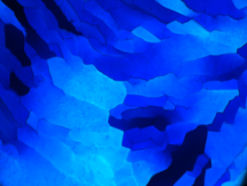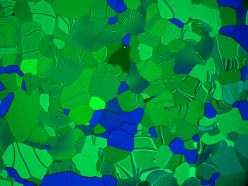Liquid-crystal 'blue phases' can be just about any colour in the rainbow. This makes them potentially useful for all sorts of applications, from electrically switchable colour displays to light filters and lasers. But blue phases have a significant limitation: they exist over a very small range in temperature, typically no more than two degrees Celsius at most.



The Department's Professor Harry Coles and Dr Mikhail Pivnenko report a solution to this instability in this week's scientific journal Nature. They have discovered a class of blue-phase liquid crystals that remain stable over a very much wider range: from 16 to 60 degrees. The researchers show that their ultrastable blue phases could find some useful applications in optical technology. Typically, liquid crystals are made from rod-like molecules that line up in at least one direction while remaining mobile and disorderly in the others. In blue phases, this alignment of molecules takes a complicated form: the molecules assemble into cylindrically shaped arrays in which the direction of alignment twists in a helix, while the helices themselves criss-cross in three dimensions. The structure repeats regularly every several hundred nanometres, which means that it reflects visible light of a particular colour. The new blue phases are made from molecules in which two stiff, rod-like segments are linked by a flexible chain. The researchers say that this unusual structure is what makes the blue phase so stable. They show that the colour of the reflected light can be switched by applying an electric field to the material, and that this could be used to produce three-colour (red-green-blue) pixels for full-colour displays.

